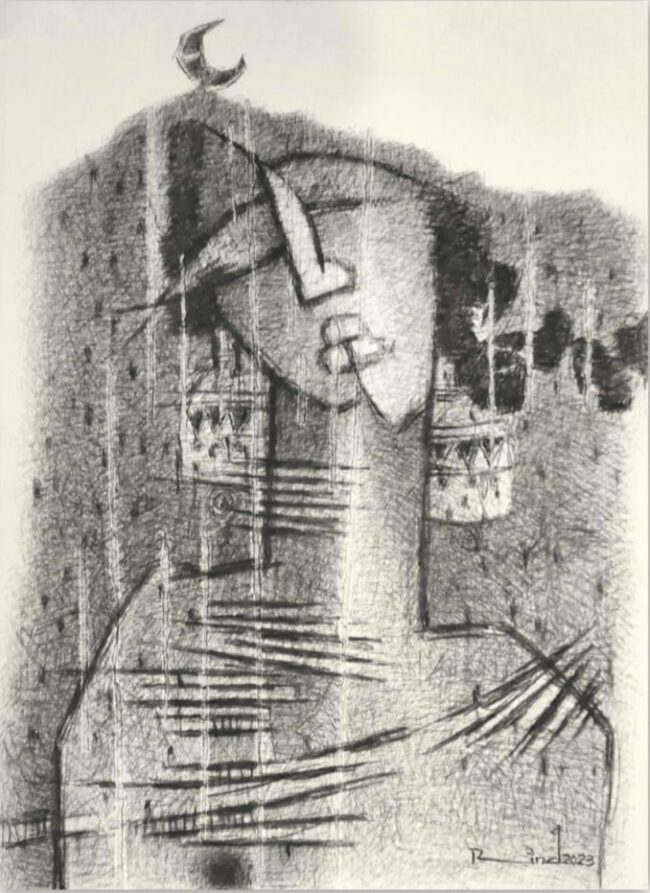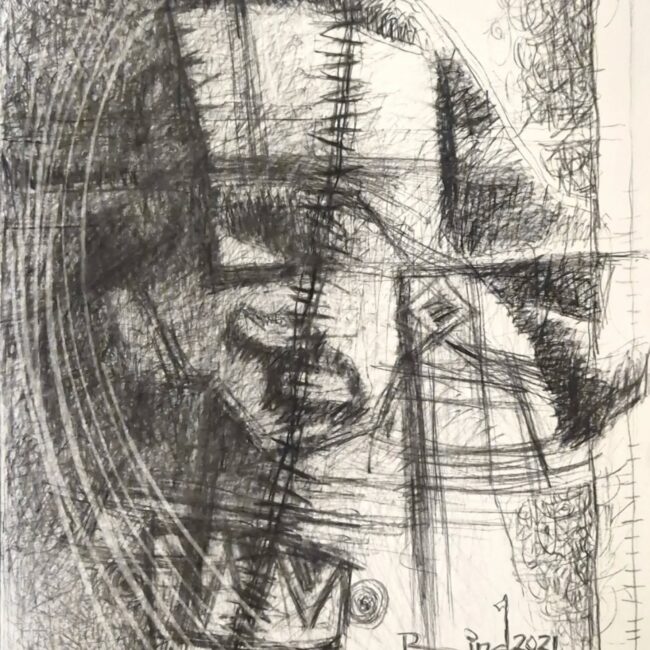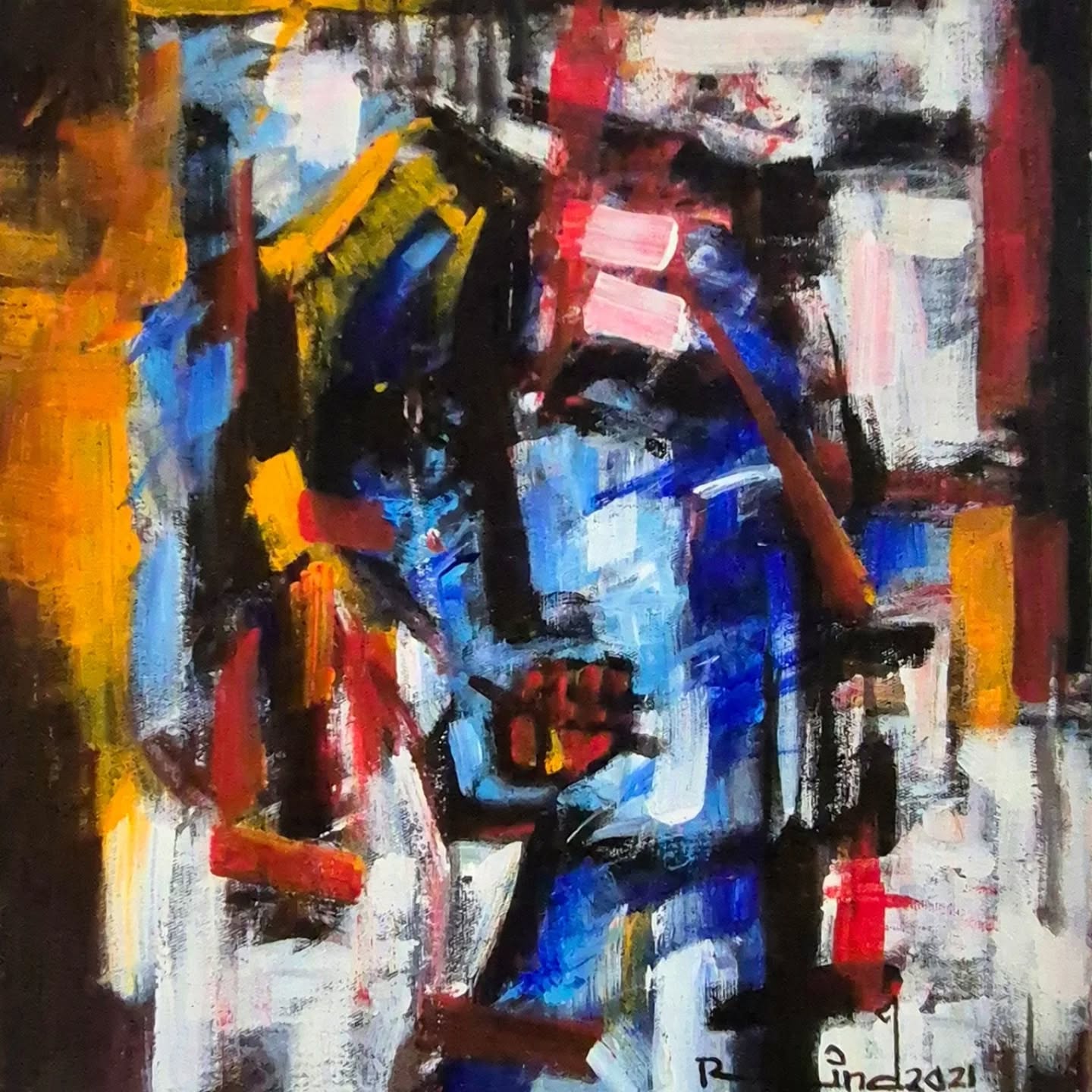Veiled Truth opened at Art Citi Gallery Karachi was The visual embodiment of poetry slathered across his canvases, A.S. Rind is one of the few Pa
Veiled Truth opened at Art Citi Gallery Karachi was
The visual embodiment of poetry slathered across his canvases, A.S. Rind is one of the few Pakistani artists who fuses many different styles of work to create something distinctive and entirely his own. Born and raised in Rahim Yar Khan, he was inspired by his uncle who was a poet, and there found his calling for incorporating the very lyricism that inspired him into great works of art. The artist’s experimentation with line, form, color and script has evolved into a different league, for which only admiration prevails.

He is not the kind of artist who confines himself to a studio solely for commercial purposes, exhibiting only occasionally. Instead, he keeps his work relevant, constantly exploring new dimensions. His recent exhibition, Veiled Truth, opened at Art Citi Gallery in Karachi showcases his proficiency, in pushing boundaries and challenging conventional notions by infusing depth, layers, and countless meanings into his art. Rind’s renditions of female forms draped in native attires and ornaments, often accompanied by motifs of birds, leaves, or musical instruments, create a rather lively and picturesque work of art, aided by a rather vast and vibrant color palette. Not only this, but he is fond of consolidating poetic verses in his style of calligraphy within the paintings, which perhaps serve as his muse or inspiration for the visual depictions he presents or shed light on the subject matter of the work itself.

One could call A.S Rind an adventurer, for he has taken many voyages in the field of art, through realism, impressionism and most of all, cubism. He deconstructs and simplifies the figures being portrayed, the artist enthused by interlocking planes and stylization where the women that live in the artist’s canvas are laden with adornments and eastern clothing, with long slender necks and widened eyes, almost agreeing to a seraphic visual as though beautiful divinity has been poured into these souls.

These seemingly larger-than-life beings carry a badge of cultural influence and affinity, an ode to the women of the artist’s native city. His figurative work and portraiture often reflect a solemn mood, especially the ones where color is absent and the work succumbs to raw honesty and truth, urging the viewer to attest to the figure’s emotional identity and reflect on their individualism. These figures, always unsmiling and wide-eyed, as though harbouring the sight to see the bitter reality of this world, capture the essence of what the artist termed as “the tortured soul.” what is the soul anyway, except an escapist construct that tether’s oneself to evade existential dread, the very likes of which come for all beings at some point in their life. In a jarring visual contrast, the artist’s more colorful and vibrant ventures along with motifs of birds, cages, roses and so forth only condone this very appeasement; adorning the reality of life with ornaments and grace.

A S Rind’s signature mystique black crows have theri stark presence in his sketches. They create a visual, strategically placed in every piece, cast an eerie and intriguing aura. Rind’s artistic vision manifested in sketches, with the black crows rendered on canvas and sculpted and suspended in mid-air. This eerie installation invited attendees to confront the mystique of the black crows, their stark presence creating a visual spectacle that played on the boundaries between reality and the macabre. The haunting elegance of Rind’s creation stood as a unique and thought-provoking welcome to all who dared to enter the artistic realm of the festival.

Even though he has had origins in realism, expressiveness spills onto Rind’s recent works through action painting and abstract line quality which inculcates texture and adheres to narratives the artist depicts. His work could also easily be seen as an ode to his home place, each proclaiming the culture and heritage that surrounded Rind in his nativity and early life, each figure in portrayal paying an homage to the regional chronicles and aesthetics of his life. At times, verses from poets like Faiz Ahmed Faiz calligraphed onto the work aid in garnering themes of love and devotion, adding a layer of adulation to this timeless capsule of vibrancy.

As versatile as he is, Rind leaves his bodies of work to interpretation, not taking it upon himself to cement any precedence but only aiming to ignite conversation and leave a lasting legacy of thought. In Rind’s own words, “As an artist, I am not bound to express or agree with somebody else’s ideas and thoughts,” which only serves to attest to his free and liberated process of work, leaving viewers to not only gaze in admiration but also broaden their cognizance in an effort for self-discovery the search for the truth, no matter how grim or appealing the latter may be to the individual in question.
